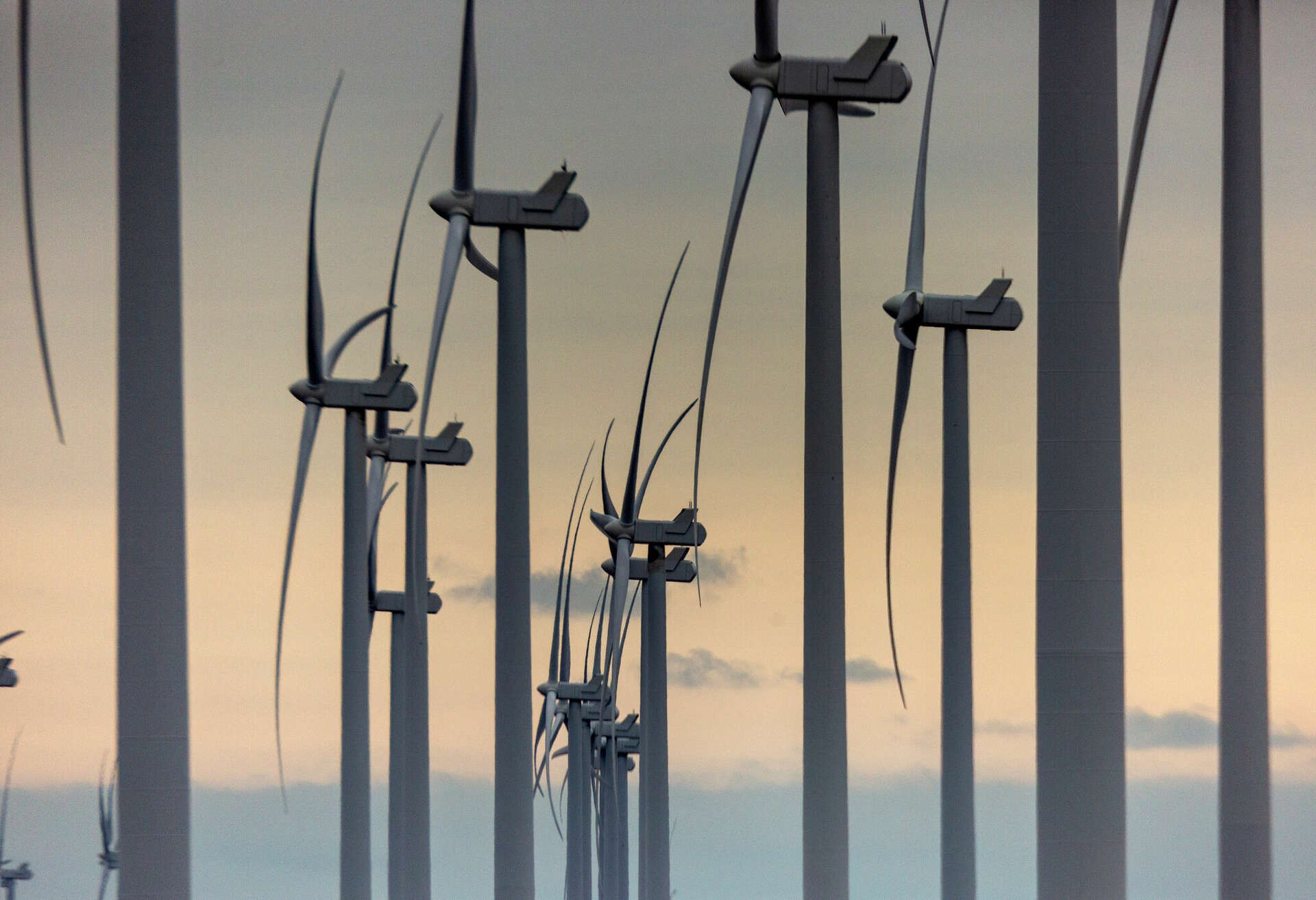ERCOT admits Texas grid faces risk of ‘cascading outages’ in wait for new CPS transmission line
Published: Sat, 03/23/24
ERCOT admits Texas grid faces risk of ‘cascading outages’ in wait for new CPS transmission line

Wind turbines spin near Raymondville in the Rio Grande Valley in far south Texas in 2021. The state power grid operator said this week the rapid growth in such generation and the need for more transmission lines to get the power north have increased the possibility of outages when demand peaks.
William Luther
San Antonio Express-News
By Sara DiNatale,,Staff writer
The state grid operator is admitting it underestimated how quickly the San Antonio region would grow — a missed forecast that’s left it with transmission issues that “could lead to cascading outages” that put the statewide grid at risk.
The Electric Reliability Council of Texas this week told regulators its analysis missed the need to boost transmission capacity between the southern and northern regions of the state. While CPS Energy has a new line in the works to solve the problem, it won’t be done for three more years.
“We should have been able to see this in 2018,” Chief Operating Officer Woody Rickerson told the Public Utility Commission on Thursday. “If we saw it in 2018, we’d have time for this line to have been built last year.”
Now, ERCOT is preparing to cut off power to keep it from overcrowding lines when demand is high and power supply is uneven between the south and north ends of the existing lines. The action, which would curtail about 250 megawatts systemwide, aims to head off emergency conditions like those reached Sept. 6, when the state grid came closer to blackouts than it’s been since the February 2021 winter storm that left millions of people in the dark for days and more than 200 dead.
Commissioners weren’t thrilled with the idea of keeping power off the market. Rickerson said he wasn’t, either, but that in certain situations, it’s the best option to stave off a more dire scenario.
When there are outages or lower supply from renewables on one end of the line — typically the end opposite San Antonio toward Waco and Dallas — the path to move the extra supply to where it’s needed can become like a crowded highway of speeding cars. The more cars, the more potential for crashes.
Northern deficit
“I know y’all are trying to do what’s right for reliability across the system,” Commissioner Jimmy Glotfelty said. “The way that I think about this from a generator perspective … that when you put the limit on this line, you’re effectively limiting generation in the south’s ability to get to the market in the north.”
Rickerson said the issue comes from the fact there is not enough generation north of the pain point. Meanwhile, there’s sometimes a surplus of power at the opposite end — from CPS Energy or wind farms in Corpus Christi.
He said load growth — the actual amount of power needed — was much “more rapid and concentrated” in San Antonio, the whole of Central Texas, and Dallas than ERCOT anticipated.
“That made the situation worse,” Rickerson said.
Rapid increases in demand for power are being driven by the state’s population boom, hotter temperatures and business growth — including power-hungry data centers and crypto mines.
Another factor in ERCOT’s missed forecast: After 2018, some 6,400 megawatts of generation capacity in northern parts of the state was closed and retired — more than it had expected. In the same period, the southern part of the state rapidly added upward of 4,000 megawatts of wind and solar generation.
Solar, wind and battery storage systems can be constructed more quickly and at less expense than traditional gas-fired power plants. While the time it takes to get new power online has decreased, beefing up transmission lines to handle that power still takes between three and five years.
Reducing demand
In its memo to regulators, ERCOT outlined mitigation tactics such as demand-response programs that move demand off the system. Commissioners also encouraged research into how battery systems can be installed and their power strategically deployed to keep the existing lines’ balance in check.
ERCOT says it’s already creating tools to better predict the load growth and transmission needs so it doesn’t find itself in the same situation again.
“I think load is just continuing to grow and grow in South Texas and it won’t stop at the CPS Energy project,” said Commissioner Lori Cobos. “We must remain vigilant and diligent in identifying future transmission projects down there.”
Cobos said she also wanted to look more into the role crypto mining could be playing in the fast growth of loads and at measures the PUC can take to force them off the grid during critical periods. She pointed to 7,000 megawatts of demand from crypto mining in the Permian Basin alone as an example of its outsized impact.
And new incentives, such as the Texas Energy Fund’s new loan program that’s aiming to make it worthwhile for companies to build new gas-fired plants, should create more power generation in northern parts of the state, Cobos said.
ERCOT said it expects to have to actively limit the amount of power zipping across the current lines until the summer of 2027, when CPS’ improved $329 million transmission system is up and running. ERCOT and the PUC approved the project last year. CPS first proposed it in December 2022.
The project, spearheaded by San Antonio’s city-owned utility, is called the CPS Energy-San Antonio South Reliability Regional Planning Group Project. Its goal is to increase the amount of power that can be moved from South Texas, where CPS and other generators are regularly making excess power to sell onto the grid.